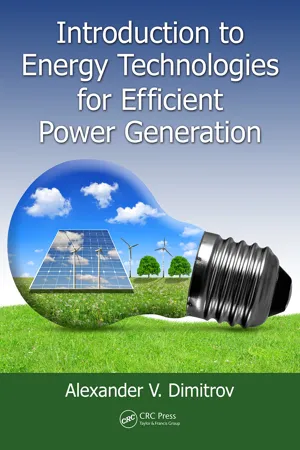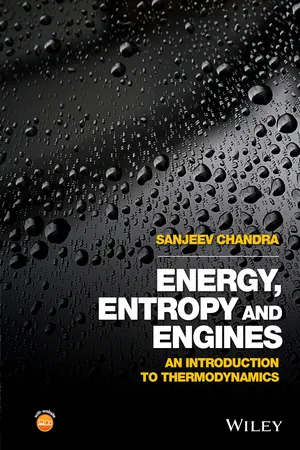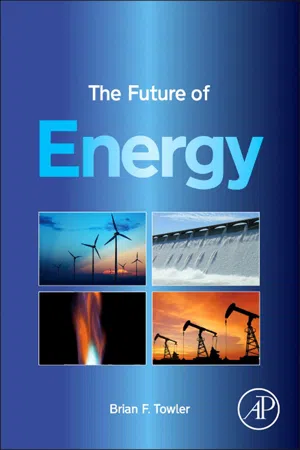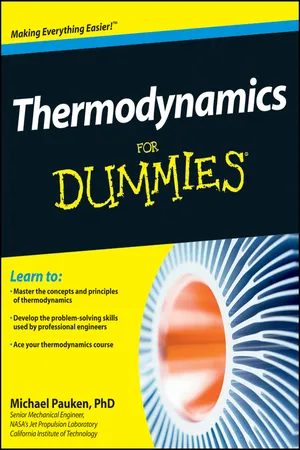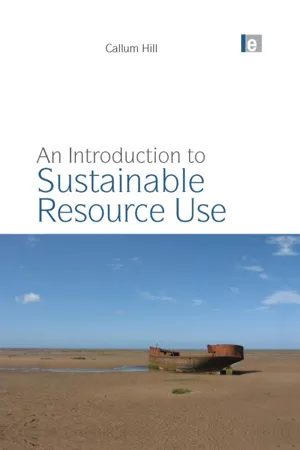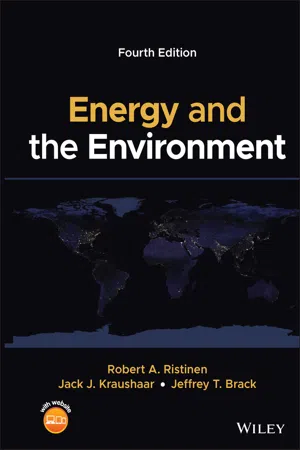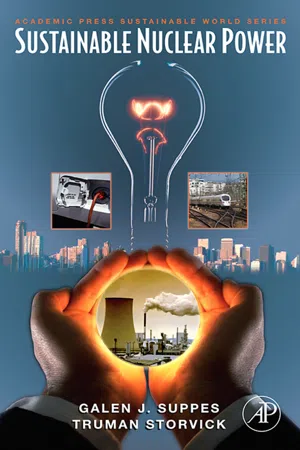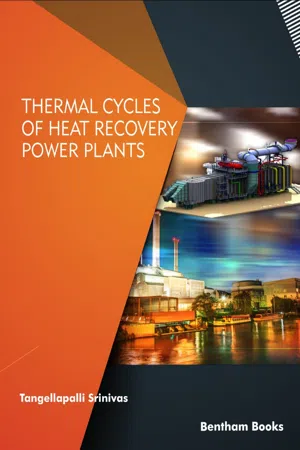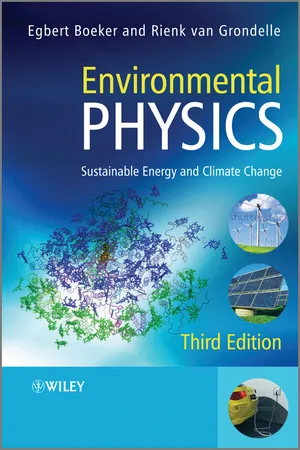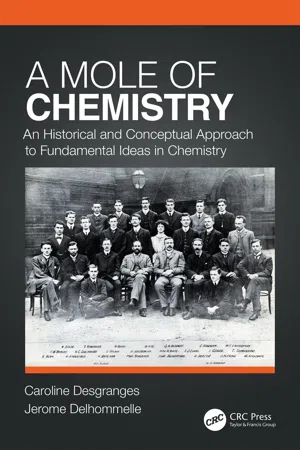Physics
Heat Engines
Heat engines are devices that convert thermal energy into mechanical work. They operate on the principle of the second law of thermodynamics, which states that heat naturally flows from a hot reservoir to a cold reservoir. Heat engines utilize this heat flow to produce useful work, such as powering vehicles or generating electricity.
Written by Perlego with AI-assistance
Related key terms
11 Key excerpts on "Heat Engines"
- Alexander V. Dimitrov(Author)
- 2017(Publication Date)
- CRC Press(Publisher)
2Conversion of Thermal Energy into Mechanical Work (Thermal Engines)Energy-related (power) technologies may be treated as a combination of engineering-technical methods of energy and work conversion employed to facilitate human life. They are divided into two main groups. The first group comprises technologies of heat conversion into another type of energy (mechanical, electrical, electromagnetic, etc.) while the second one comprises technologies of heat transfer, accumulation, and regeneration. Each thermal technology discussed herein will be illustrated by specific physical schemes and devices. We shall consider them in the following order:•Technologies of mechanical work performance (so called thermomechanical technologies) •Technologies of generation of electrical energy (thermoelectric technologies) •Technologies of heat transformation (regeneration and recuperation) •Technologies of heat transfer and collection (transfer and accumulation) •Technologies creating comfortable environment (air conditioning and ventilation)Thus, we will treat a certain technology as an object of study of respective scientific-applied research fields, on one hand, and we will follow the teaching programs on “Power engineering,” “Transport management” and “General mechanical engineering,” on the other hand.2.1 Evolution of Engine TechnologiesAs is known from physics, energy conversion follows a natural course, that is, energy of motion of macro- and microbodies (popular as mechanical energy) is converted into heat by mechanisms that are studied by tribology (including dry, semi-dry, viscous, or turbulent friction). No opposite transformation is observed in nature. Heat conversion into energy needed for the operation of machines and mechanisms was an impossible task for primitive people as well as for those living in slave-holding* and feudal†- eBook - ePub
Energy, Entropy and Engines
An Introduction to Thermodynamics
- Sanjeev Chandra(Author)
- 2016(Publication Date)
- Wiley(Publisher)
8 Ideal Heat Engines and RefrigeratorsIn this chapter you will:
- Give a definition of a heat engine.
- Learn about perpetual motion machines – Heat Engines that cannot exist since they violate the laws of thermodynamics.
- Analyse Carnot engines – the most efficient Heat Engines possible in theory.
- Show how Carnot engines operated in reverse act as refrigerators or heat pumps.
- State the Carnot principles, that reversible engines are the most efficient engines possible and that all reversible engines have the same efficiency.
8.1 Heat Engines
Much of our discussion so far has been about the fundamental laws of thermodynamics, but we have now learned enough that we can address the question that initially drove the development of these laws: what is the most efficient engine that can be built?To begin, let us identify what we are discussing when we talk about an engine. A heat engine is any device that operates in a cycle and does work (Wnet) on the surroundings as long as heat (Qin ) is added to it. The engine must do a net amount of work (the work output less any work used internally by the engine) on its surroundings. The requirement that the engine work in a cycle is essential for it to operate continuously, so that as long as we supply heat to the device we can extract work from it. Energy storage devices, such as batteries, spinning flywheels or compressed springs are not considered engines since they will cease to work once we have extracted all available energy.How much work can we obtain from an engine for a given amount of heat? Our goal is to design an engine with maximum thermal efficiency, which we define as(8.1)It is frequently convenient to define the thermal efficiency of an engine on a rate basis as(8.2)We will disregard our sign convention for work and heat when discussing engine efficiencies, because we want to compare only their magnitudes: considering positive and negative values would only be confusing. In this chapter W and Q - eBook - ePub
- Brian F. Towler(Author)
- 2014(Publication Date)
- Academic Press(Publisher)
How much heat can be transferred between two bodies depends on their temperatures and the method of heat transfer. Heat energy cannot be converted entirely into work or mechanical energy, electricity or any other form of energy. This has a big impact on the efficiency of Heat Engines. When fuel is burned in a heat engine, the chemical energy that is stored in the chemical bonds of the fuel molecules is released. This energy is transferred to the engine as heat; however, not all of that heat can be converted into mechanical energy. When people were developing and trying to perfect Heat Engines, such as the internal combustion engine, they discovered this limitation and had to understand it. The result was the formulation of the second law of thermodynamics.The seminal work in this area was due to a French engineer called Sadi Carnot. In 1824, he published a paper entitled, Reflections on the Motive Power of Fire and the Machines Needed to Develop This Power . This paper presented the idea that the amount of work done by a heat engine is due to the flow of heat from a hot to a cold body. Carnot’s understanding of heat was still mired in the incorrect caloric theory of heat, but his conclusions were still valid. His analysis determined that the theoretical heat that could be transferred to the heat engine was proportional to the temperature difference between the heat source (the hot body) and the heat sink (the cold body). This analysis allowed him to calculate the theoretical efficiency of a heat engine, which turned out to be much lower than the efficiency of other energy conversion processes.Using Carnot’s analysis, several people were able to deduce different statements of the second law of thermodynamics. Some of these are: - eBook - ePub
- Mike Pauken(Author)
- 2011(Publication Date)
- For Dummies(Publisher)
In an agrarian economy, one way to convert energy into work is to feed a mule, hitch it up to a plow, and crack a whip. The farmer gets his field plowed and fertilized at the same time. In an industrial economy, a heat engine converts energy into work. The industrial farmer fills the tractor with diesel fuel, plows the ground, and cracks open a soda can. The mule now looks leisurely over the field, watching dust clouds form behind the plow.A heat engine is a device that converts heat into work. Examples of Heat Engines include- Gas turbine engines that are used in power plants to make electricity and on aircraft as jet engines. (See Chapter 10.)
- Internal combustion engines used in automobiles, trucks, boats, trains, lawn mowers, and so on. (See Chapter 11.)
- Steam power plants for generating electricity. (See Chapter 12.)
Characterizing Heat Engines
All scientific observations of a heat engine reveal that it must reject a portion of its energy to a low-temperature reservoir to complete its cycle. No heat engine is able to convert all the heat input to work. This observation is expressed as the Kelvin-Planck statement of the second law of thermodynamics, which says that it’s impossible for any heat engine that operates in a cycle to receive heat only from a single reservoir and convert all the heat into work.A heat engine must operate in a cycle between high- and low-temperature reservoirs to produce a net work output. Heat Engines such as those found in power plants, automobiles, and jet engines absorb heat from a combustion process and reject the heat into the environment. Despite the many varieties of Heat Engines, Figure 7-2 shows they all have the following characteristics:- A heat engine uses a fluid to absorb and reject heat. The fluid can also accept work input and provide work output from the heat engine. The fluid can be either a gas or a liquid. When the fluid is a liquid, the heat absorption process changes it to a vapor, and the heat rejection process changes it back to a liquid. The working fluid is usually air or water, but other fluids can be used in specialized systems.
- eBook - ePub
- Callum Hill(Author)
- 2012(Publication Date)
- Routledge(Publisher)
Nonetheless, the caloric theory of heat was still current when James Prescott Joule reported on a very precise determination of the mechanical equivalence of heat in 1845. As well as being a physicist, Joule was also a brewer, and his experience allowed him to design extremely precise pieces of equipment for measuring slight temperature changes in the water. His most famous apparatus consisted of weights connected to paddle wheels which sat in a container full of water. The amount of mechanical energy transferred to the water could be calculated by knowing the measurements of each weight and how far it had dropped. The results from this and other similar experiments were initially met with scepticism, since they showed that the caloric theory of heat could not possibly be correct. The experiment demonstrat- ed that mechanical work could be turned into heat, but the increase in temperature of the water tank could have been produced just as easily by using a flame to heat up the water. The result would be indistinguishable. For this reason mechanical work and heat must be equivalent and both have to be considered to be forms of energy. Caloric (heat) was not conserved, but energy was. But what was energy?In order to understand the concept of energy better, we have to go back a little in time and the first theoretical study of the efficiency of a steam engine.Efficiency
In 1824, twenty years before Joule performed his famous experiment, a 28-year- old French scientist called Nicholas Léonard Sadi Carnot published a book entitled Réflexions sur la Puissance Motrice du Feu et sur les Machines Propres à Développèr cette Puissance ( Reflections on the Motive Power of Heat and on Machines Fitted to Develop that Power ). In this book, Carnot considered the properties of an ideal heat engine. The actual details of the construction of the engine did not matter, since this was a theoretical study. In fact, Carnot proved that the design of the heat engine was irrelevant to the conclusions that he reached. A heat engine is any machine that converts thermal energy to motion; examples include steam engines, petrol engines, diesel engines and gas turbines. The basis of the operation of such a heat engine is shown in Figure 2.1.Figure 2.1 A diagram showing the principle of the Carnot heat engineA hot source is linked through the heat engine to a cold sink and mechanical work (often called shaft work) is extracted from the engine. This is a spontaneous process. Heat is flowing from hot to cold and the question is how much of this heat energy can be diverted into mechanical work before the process becomes impossible. The concept was rooted in caloric theory and Carnot was considering the flow of caloric through the machine. However, the use of caloric theory does not invalidate the conclusions that Carnot reached in this study. - eBook - ePub
- Robert A. Ristinen, Jack J. Kraushaar, Jeffrey T. Brack(Authors)
- 2022(Publication Date)
- Wiley(Publisher)
3 Heat Engines3.1 The Mechanical Equivalent of Heat
If we take a look at the energy units, it becomes apparent that what we think of as a rather small unit of heat energy, for instance one Btu is in fact a very large amount of energy compared to what we see in a mechanical unit of energy, the foot‐pound. One Btu is the same as 778 foot − pounds. The thought of lifting a one‐pound weight 778 feet into the air with the energy released by the burning of only one match can certainly be appealing to those who do heavy lifting for a living. To realize this goal, we must first find a way to capture the heat energy of the fuel and turn it into mechanical energy.The possibility of easing human labor by utilizing heat sources has been the driving force behind a long history of development of what we now call Heat Engines. This is the main subject of this chapter.3.2 The Energy Content of Fuels
We go to a great deal of effort to obtain fossil fuels and other types of fuel for two basic purposes: to provide direct heating and lighting, and to power Heat Engines. The general pathways by which we do this are shown in Figure 3.1 .Heat Engines and the thermodynamic principles that govern their operation will be discussed in detail later. First, let us look at how heat is derived from fuels. In simplified form, the burning of hydrocarbon fuels is merely the combining of the carbon and the hydrogen from the fuel with oxygen from the air. Burning of a hydrocarbon compound is the reverse of photosynthesis and proceeds according to the basic chemical reactions:andThese two simple reactions are both included in the overall reaction formula for an actual fuel. For example, we may consider the burning process for heptane, C7 H16 - eBook - ePub
- Galen J. Suppes, Truman Storvick(Authors)
- 2006(Publication Date)
- Academic Press(Publisher)
CHAPTER 5History of Conversion of Thermal Energy to Work
Publisher Summary
Classical thermodynamics is a mathematical structure that describes the behavior of gases, liquids, and solids as the temperature, pressure, and composition change. Work is the numerical value of a force multiplied by the distance over which that force is applied. The energy is released when the molecules that make up the fuel break apart and chemically combine with oxygen in the air to form new molecules. This oxidation reaction destroys the fuel chemicals to produce carbon dioxide and water vapor, releasing heat in the process. The thermal energy that is released is diffused and it moves in all directions with equal ease. The development of Heat Engines to convert this diffused thermal energy to useful work set the path of the industrial revolution. Different types of engines and their working principles are described. The steam turbine is the primary source of power to drive dynamos in electric power stations. The primary measure of performance for steam engines and turbines is thermal efficiency, which is the amount of shaft work produced divided by the amount of heat taken from the boiler. Practical fuel cells were designed during 1960s and were first used during the NASA Apollo program. The fuel cells are fueled with stored hydrogen and oxygen. Different chemical reactions produce different fuel cell voltages. Fuel cells have great potential for socio-economic benefits and can be improved with the use of grid electricity.The story of energy conversion is the story of life. It is the story of people coming out of the caves to harness the environment. It is the story of conquest. And it is the story of the rise and fall of empires. The many forms of energy surround us every day, including the energy that fuels life itself.As illustrated by Figure 5-1 - eBook - ePub
- Tangellapalli Srinivas(Author)
- 2021(Publication Date)
- Bentham Science Publishers(Publisher)
Basic Thermodynamics of Heat Recovery Power Plants Tangellapalli SrinivasAbstract
The basics of thermodynamics required to evaluate a thermal power plant have been summarized. The first law of thermodynamics and the second law of thermodynamics are overviewed to solve the power plant in view of energy analysis and exergy analysis. The chemical reactions with solutions are explained to understand the solid fuel firing in a typical furnace in a power plant.Keywords: Combustion of fuels, Exergy, First law of thermodynamics, Second law of thermodynamics.INTRODUCTION
Thermodynamics is the science of energy conversion with framed laws and regulations. In thermodynamics, heat and work are the focused energies. It plays a key role in planning and organizing a thermal system before its making. It also develops the optimum process conditions for the efficient operation of a thermal power plant. Nature has a tremendous amount of energy. The energy always tries to convert from one form to another form. Thermodynamics deals with these energy interactions in a systematic way with reference to certain rules called thermodynamic laws. Sadi Carnot, the father of thermodynamics, developed a benchmark heat engine called Carnot engine and made a goal for a thermal power plant. He also developed many theories that are more relevant to a thermal power plant. The complete thermodynamics study includes four ‘E’s viz. energy, exergy, economics, and environment. The thermodynamics laws viz. zero, first, second, and third are designed based on logic and common sense.THERMODYNAMIC SYSTEM
Thermodynamic system is a prescribed region with finite matter, confined by walls which separate it from the surrondings. A typical thermal power plant consists of four thermodynamic systems viz. - eBook - ePub
Environmental Physics
Sustainable Energy and Climate Change
- Egbert Boeker, Rienk van Grondelle(Authors)
- 2011(Publication Date)
- Wiley(Publisher)
4.59 )(4.60)The thermal efficiency η of a heat engine is defined by(4.61)For the reversible heat engine, working between two reservoirs this gives the Carnot efficiency .(4.62)The usual heat engine operates between the ambient temperature T C and a much higher temperature T H , as shown in Figure 4.8 a. In principle, an engine could also operate using the ambient temperature as T H and a much lower temperature as T C , illustrated in Figure 4.8 c.Heat Engines could also use work as input in order to transfer heat from a lower to a higher temperature. The first example is the heat pump depicted in Figure 4.8 b. It may be used to convert low temperature heat in, for example, groundwater to the higher temperatures needed in a living room. The coefficient of performance COP of installations is generally defined as(4.63)for a complete cycle. For the heat pump the useful output is the high temperature heat Q H . The input is the work W = Q H − Q C , where again the first law (4.32 ) is applied. For a complete cycle the only entropy changes are taking place in the reservoirs. This gives from (4.57 )With this inequality the COP can be calculated as(4.64)This COP is bigger than 1 and in practice may be as high as 5 or 6. The heat pump is sometimes called a thermodynamic lever. To come back to Section 4.1.7 on heat storage, it is clear that heat storage in summertime in the ground or in groundwater may be done by a heat pump. In summer the low temperature T C is in the ground and the higher temperature T H in a building; in winter it is the other way round.Figure 4.8 d shows the second example where work is used to transport heat Q C from T C to a higher temperature T H . The lower temperature is inside the refrigerator or freezer and the higher temperature is the ambient one, consequently the ‘useful output’ of Eq. (4.63 ) becomes Q C and the required input remains W = Q H − Q C - Stanislaw Sieniutycz, Jacek Jezowski(Authors)
- 2013(Publication Date)
- Elsevier(Publisher)
Lewandowski, 2001 ). The compression stage plays an essential role in the performance and classification of heat pumps. It can be driven by work or heat. In the latter case a heat pump actually contains two cycles: the refrigeration cycle itself and the heat engine cycle, which compresses circulating vapor. In a sorption heat pump a working arrangement with medium and sorbent (absorber and desorber) is used in the engine cycle. The net heat supply to the cycle is the difference between the heat supplied to the desorber and that extracted from it by the absorption process. It leads to an increase in the enthalpy of the working vapor between the evaporator and condenser; in compression heat pumps this effect is achieved by a compressor.Le Goff et al. (1988 , 1990a , 1990b , 1990c , 1990d ) have developed a reader- friendly schematizing of these systems. Any sorption heat pump or heat transformer is a double energy converter. It first converts low-value thermal exergy into chemical exergy in the separator, which is composed of the desorber and the condenser; reverse conversion of chemical energy into high-value thermal exergy follows in the mixer, composed of the evaporator and the absorber. The “heat pump effect,” that is, the upgrading of low-level heat from a lower to a higher temperature, is due primarily to the entropic contribution to the (chemical) exergy of mixing, Δb m = Δh m − T 0 Δs m . In absorption and sorption heat pumps the enthalpic contribution is often much smaller than that due to entropy. In chemical heat pumps the enthalpic contribution dominates. It is even possible to design an efficient heat transformer with an ideal mixture, where Δh m = 0 (Le Goff et al., 1990a , 1990b , 1990c , 1990d ). A general objective of sorption heat pumps is to maximize the “temperature lift” (the temperature difference between the evaporator and absorber) for a given “thermal driving force” (the temperature difference between the desorber and the condenser). These temperature differences are expressed most conveniently in terms of the related nondimensional temperatures θ = 1 − T 0 /T . The exergy balance in terms of θ (Le Goff et al., 1990a , 1990b , 1990c , 1990d- eBook - ePub
A Mole of Chemistry
An Historical and Conceptual Approach to Fundamental Ideas in Chemistry
- Caroline Desgranges, Jerome Delhommelle(Authors)
- 2020(Publication Date)
- CRC Press(Publisher)
Ueber die bewegende Kraft des Wärme und die Gesetze, welche sich daraus für die Wärmelehre selbst ableiten lassen ” (On the Moving Force of Heat and the Laws regarding the Nature of Heat itself which are deducible therefrom) in 1850. The first explicit statement of what we now call the “first law of thermodynamics” is “In all cases where work is produced by heat, a quantity of heat is consumed proportional to the work done; and inversely, by the expenditure of the same amount of work the same quantity of heat may be produced”. Using a mathematical formalism (following Clapeyron’s work), he also introduces the concept of internal energy: “Work may transform itself into heat and heat conversely into work, the quantity of the one bearing always a fixed proportion to that of the other”. Nowadays, it has the form ΔU = Q – W in which ΔU is the change in internal energy of the system, Q the heat released by the system and W the work done by the system (in the European convention, the firs law becomes ΔU = Q + W). As we can see, this can also read as the law of conservation of energy, adapted to thermodynamic systems. The law of conservation of energy states that the total energy of an isolated system is constant: Energy can be transformed from one form into another, but it can neither be created nor destroyed. An important consequence of the first law is that perpetual motion (motion that continues indefinitely) cannot exist without an energy source!In 1848, Thomson defines a new scale of temperature, which now bears his name: the Kelvin scale. This absolute scale aims to replace the old scales (Fahrenheit, Celsius, etc.), which are based on the behavior of a fluid (mercury, alcohol, water, etc.) in a tube, therefore limiting their use. Therefore, Lord Kelvin decides to use the efficiency of a Carnot engine as a measure of temperature. Since the calculation of the efficiency does not rely on the nature of the fuel, engine configuration or even its power, it is thus possible to think of a scale of absolute temperature that would be universal! He proposes an absolute temperature scale in which “a unit of heat descending from a body A at the temperature T of this scale, to a body B at the temperature (T-1), would give out the same mechanical effect, whatever be the number T”. In other words, he proposes that the ratio of the heat received from the hot source to the heat yielded to the cold source be equal to the ratio of the absolute temperature of the hot source to that of the cold source; in other words, a Carnot engine, operating between 1,000K and 500K, rejects 500/1,000 = 50% of the heat it receives. If the low temperature is four times lower, the heat rejected is four times less (1,000/250) than the heat received. He also introduces the “absolute zero”, corresponding to the temperature for which no more heat can be transferred. This theoretical temperature is now fixed, following an international agreement, at −273.15°C. Let us add that the temperature scale used nowadays is the Kelvin scale (K) and is not referred to as degrees. For example, 0K = −273.15°C. It is the base unit of temperature in the International System of Units (SI).
Index pages curate the most relevant extracts from our library of academic textbooks. They’ve been created using an in-house natural language model (NLM), each adding context and meaning to key research topics.
